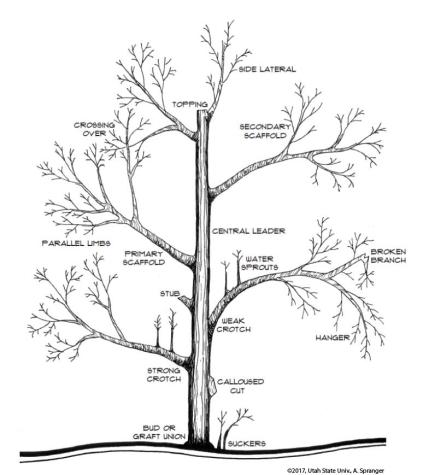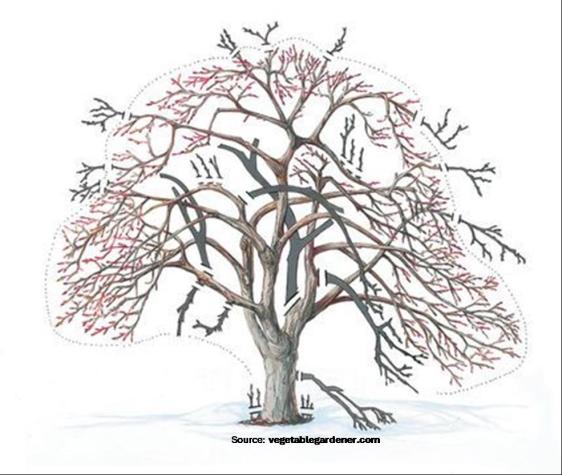COLUMBIA, Mo. – The best time to prune fruit trees in Missouri is midwinter, according to University of Missouri Extension horticulture specialist Debi Kelly.
“There are many reasons to prune fruit trees, and you want to do it before bud break in the spring,” said Kelly, who held a workshop on pruning Jan. 25 at MU Jefferson Farm and Garden in Columbia.
Kelly said pruning helps in maintaining plant health, vigor and productivity; achieving uniformity; developing a framework of younger trees; and invigorating and renewing the fruit-bearing areas of older trees. Pruning also aids management of insects and disease.
Understand the tree
It’s important to know what the rootstock is when buying fruit trees because most fruit trees have been grafted, which provides a strong root system for nutrient and water uptake, Kelly said.
“Some fruit trees will have wonderful and delicious fruit but a very poor root system,” she said. “Likewise, many fruit trees will have poor-quality fruit but a great root system. Grafting enables a tree to have both high-quality fruit and a great root system to support the tree.”
Also, make sure you understand limb growth, Kelly said. Fruit trees will have a demarcation on limbs showing where each year’s new growth starts. This is important since apples grow on one-year-old wood while peaches are produced on the current year’s growth.
The buds of apple and pear trees are unique. Buds are produced on very short shoots, called spurs, off the main branches of the tree. A spur can be either a leaf spur or a fruit spur. You can distinguish the leaf spur from the fruit spur by its growth. A leaf spur is more pointed and narrower while the fruit spur is fatter and not as pointed.
“Leaf and flower spurs will be seen throughout the tree,” Kelly said. “When pruning, leaf and flower spurs will naturally be removed, which is normal.”
Sunlight needs to penetrate into the middle of apple and pear trees to aid photosynthesis and assist with ripening the fruit. That’s why it’s important to remove unnecessary branches.
Young vs. mature trees
Dramatic pruning assists in training young trees to an appropriate growth form. Once the tree starts producing fruit, it is considered mature and should be pruned to keep the tree within its growth form. When a fruit tree has been neglected, never prune more than 1/3 of the tree to bring it back into its normal growth form. It can take several years for a neglected tree to produce fruit abundantly again.
An apple tree will have one central leader, or upright branch, as the main growing trunk of the tree. It will have four to nine limbs, called scaffolds, off the central leader. The peach tree does not have a central leader and instead has a 3- to 3 ½-foot trunk, an open center and three to five scaffold limbs.
Pruning equipment
Using appropriate pruning tools that are sharp and clean will aid in lessening damage to the tree and help keep diseases in check. Use scissors-style hand shears/pruners for branches an inch or less in diameter. Loppers cut branches up to 2 ½ inches. Use pruning saws, which have a slight curve, on thicker branches.
Make sure to disinfect tools after pruning each tree. Anthracnose and fire blight can spread through pruning. Remove diseased wood, cut it into small pieces, and throw it in the trash. Burning is an option in the country. Don’t compost the diseased waste.

